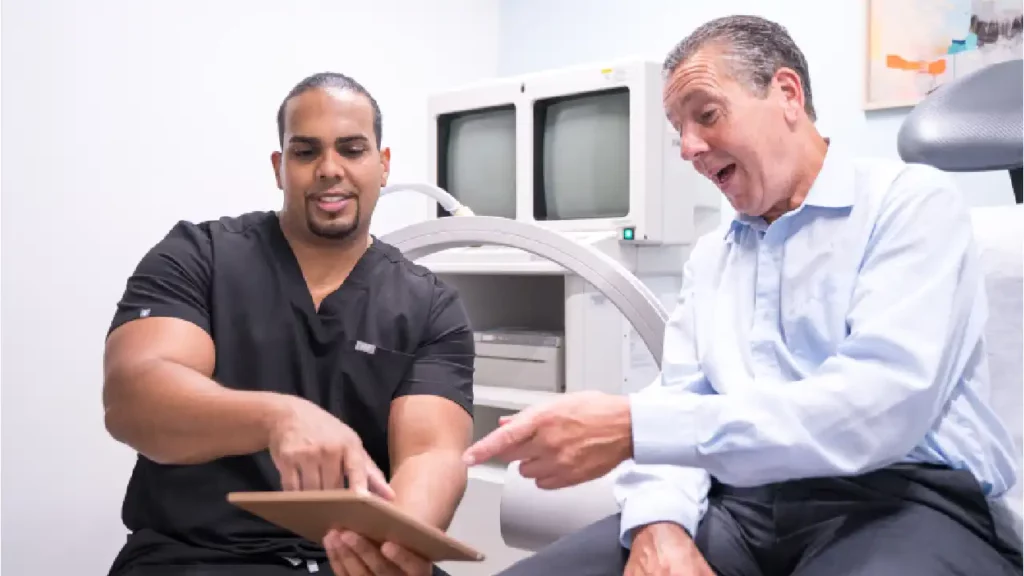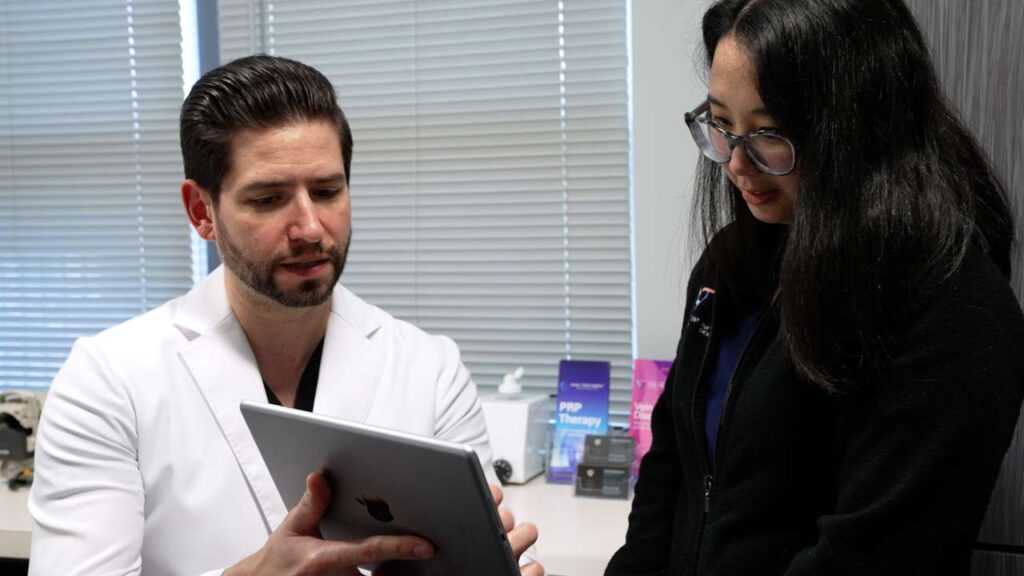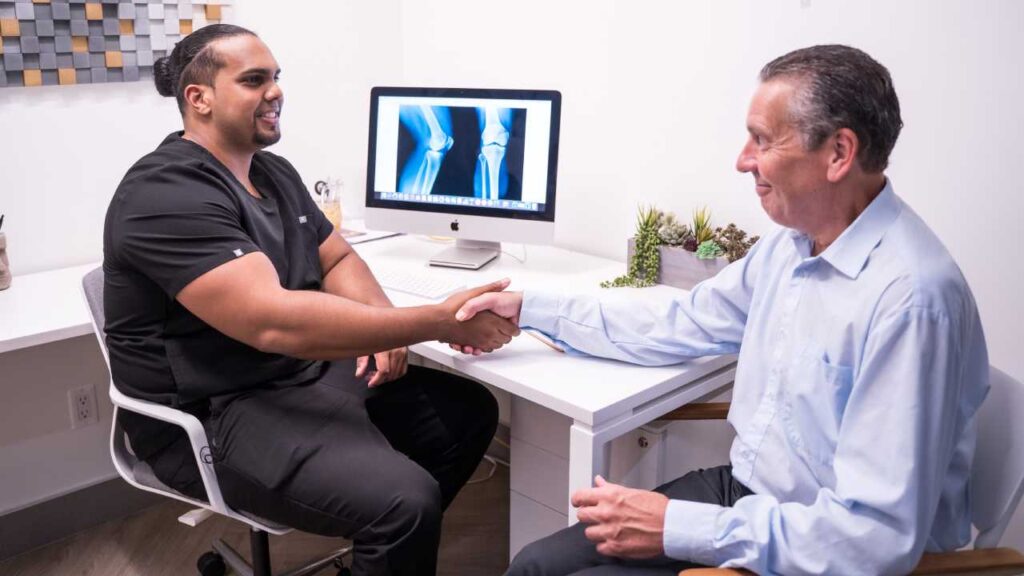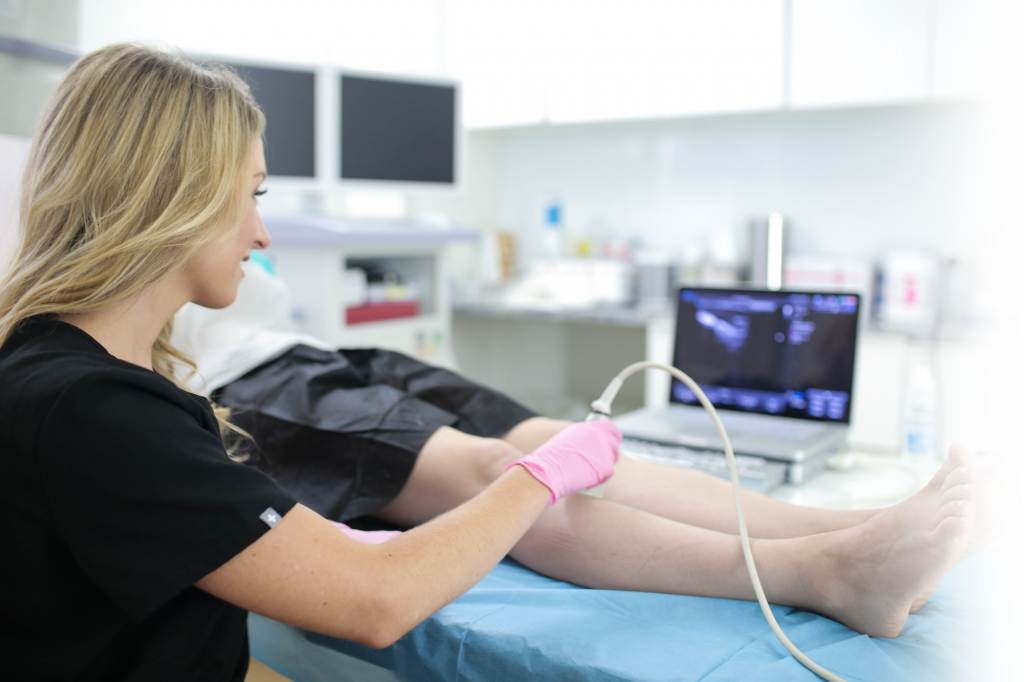Meet the Vein Specialist in Paramus
Dr. Todd Kobrinski is the leading vein specialist in Paramus, New Jersey. He’s one of the vein doctors at our state-of-the-art vein clinics in New Jersey, with an office conveniently located at 140 NJ-17 #103, Paramus, a short drive from the Paramus Park Mall. If you have the signs and symptoms of vein disease, such as spider veins, varicose veins, leg heaviness, frequent leg cramps, restless leg syndrome, etc., please book an appointment online or call 973-946-8072.
Our vein doctors in Paramus are offering the latest treatments for spider veins and varicose veins. We diagnose and treat the root cause of your vein problems, and not just the symptoms, thus ensuring long-lasting results with a negligible risk of vein disease recurrence. Furthermore, we only provide minimally invasive vein treatments because they’re safer, more effective, and more convenient than vascular surgeries. We follow the highest standards of vein care, as evidenced by our unanimous 5-star ratings and reviews.
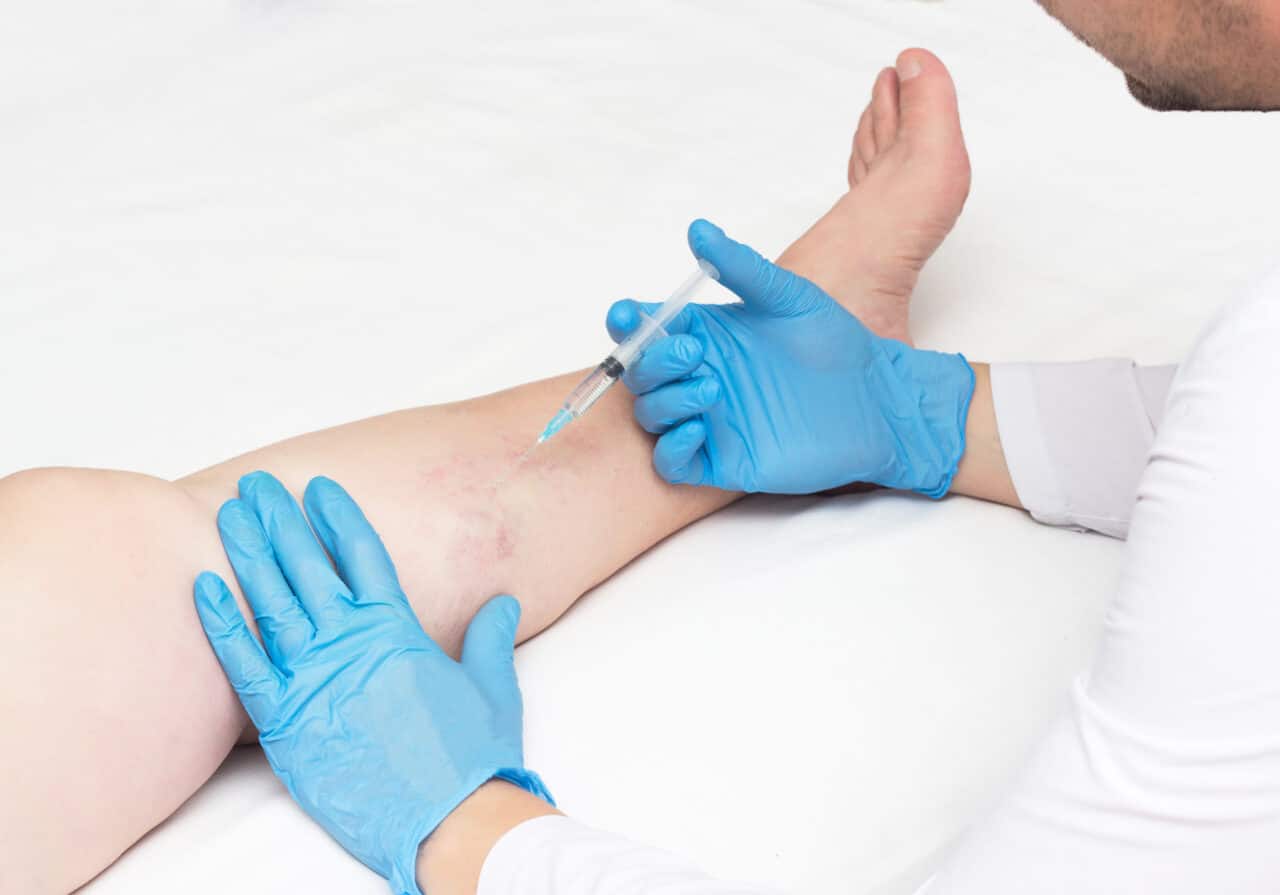
Our board-certified vein doctors believe most patients lack awareness of vein care and vein disease, which prevents them from seeking prompt treatments. This article aims to provide a comprehensive, step-by-step overview of the vein treatment process so you know exactly what to expect. As you’ll note, vein treatments are simple, in-office procedures that you can easily slide into your daily schedule! Please continue reading for a comprehensive, five-step overview of the vein treatment process in New Jersey.
Step 1: Consultation + Diagnosis
Before you book an appointment at our vein clinics in New Jersey, please request free insurance verification. We provide free insurance verification for all patients — our team will verify your details and contact your insurance providers on your behalf, allowing us to provide a complete overview of your insurance coverage options during your initial consultation. After verifying your insurance details, our team will help you book an appointment.
The primary goal of the initial consultation is to determine the likelihood of you having chronic venous insufficiency, the root cause of most vein problems. Venous insufficiency is a circulatory disorder wherein the collapse of vein valves leads to backward blood circulation, which, in turn, leads to the accumulation of blood in leg veins. The continued accumulation of blood in leg veins leads to spider veins, varicose veins, and other vein problems.
Diagnosing chronic venous insufficiency is an essential component of the initial consultation. If we treat spider veins without addressing the root cause, there’s a strong chance that your spider veins will simply return. That’s why medical spas specializing in cosmetic spider vein treatments have a high rate of vein disease recurrence. We believe in identifying and treating the root cause of your vein problems, thus ensuring long-lasting results.
To determine if you have vein disease, the vein doctor will first examine your leg veins, review your medical history, and discuss your symptoms. If you have leg heaviness, restless leg syndrome, frequent leg cramps, leg pain, and leg swelling, with worsening symptoms at the end of the day, there’s a strong chance you have chronic venous insufficiency. History of vein problems also indicates a high risk of vein disease.
After the initial consultation, the vein doctor will administer an ultrasound diagnostic test, known as duplex ultrasound. During this test, the vein doctor will use an ultrasound device to visualize the direction of blood flow in your leg veins, thus revealing the presence or absence of chronic venous insufficiency. This confirms the root cause of your vein problems, and it can also support your insurance claims, thus improving your insurance coverage.
Step 2: Treatment Planning
After diagnosing the root cause of your vein problems, the vein doctor will curate a personalized vein treatment plan. Your vein treatment plan will be based on the location and size of your spider veins and varicose veins, whether you have chronic venous insufficiency, your cosmetic goals, your budget, your medical history, and your insurance coverage options. The vein doctor will highlight the pros, cons, and costs of all vein treatments to help you make an informed decision for your vein treatment.
Step 3: Primary Vein Treatment
The primary vein treatment is meant for patients with chronic venous insufficiency, the root cause of your vein problems. The most advanced vein treatments include radiofrequency ablation, endovenous laser ablation, and venaseal. These procedures have the same underlying goal, which they accomplish using different methodologies. The primary goal is collapsing, destroying, sealing, or neutralizing the diseased saphenous vein responsible for your vein problems, thus rerouting the accumulated blood into healthier leg veins.
The following is an overview of the minimally invasive vein treatments:
- Radiofrequency Ablation: Thermal energy is channeled via a catheter to collapse the diseased vein.
- Endovenous Laser Ablation: Laser energy is channeled via a catheter hooked to a laser fiber to collapse the diseased vein.
- VenaSeal: A medical-grade adhesive is injected into the diseased saphenous vein to seal its walls shut.
Step 4: Cosmetic Vein Treatment
The primary vein treatments address the root cause of your vein problems, but they don’t necessarily remove the visible spider veins and varicose veins. That’s where cosmetic vein treatments come into the picture. Sclerotherapy and ambulatory phlebectomy are the leading minimally invasive vein treatments for spider veins and superficial varicose veins. These procedures improve the appearance of your legs, thus restoring your confidence and self-esteem, but they should only be performed after the primary vein treatment.
Step 5: Recovery + Aftercare
Your vein doctor will discuss your post-treatment recovery and aftercare guidelines to ensure you have a smooth recovery. You will have to wear compression stockings for a few days and avoid strenuous activities and swimming. However, you can resume most of your daily activities and work the moment you leave the vein clinic in Paramus, New Jersey.
